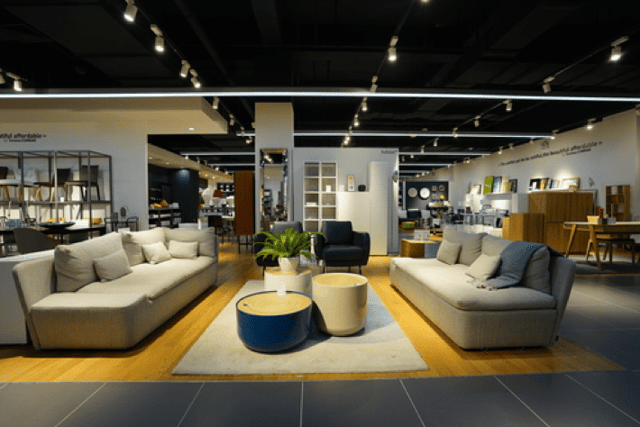eCommerce trends are affecting every facet of the retail industry across the country and the furniture industry is no exception. While it’s difficult to imagine consumers wanting to buy online— primarily due to the fact that furniture is large and shipping can be very costly — the trend is growing, and furniture stores are making big bucks in eCommerce.
In 2017, eMarketer reported that online sales of furniture and home furnishings grew by just over 16 percent and sales soared to nearly $36 billion. That number is expected to exceed $60 billion annually over the next three years.
The stats put the furniture industry at the forefront of eCommerce trends while also maintaining a solid foothold in physical showrooms. It’s one of those coveted commerce scenarios in which data-driven marketing is paying dividends in both the online platform and the brick-and-mortar retail store.
What is Driving the Digital Drift?
As eCommerce grows exponentially each year, it’s important that retailers understand what the current trends indicate and identify the best ways to stay ahead of the competition. Here, we’ll take a closer look at the current online direction and what that means for home furnishing stores, both in traditional retail spaces and eCommerce.
Click-to-Brick Stores

Despite the meteoric rise of eCommerce, the furniture industry is drawing consumers back into the physical marketplace by breathing new life into showrooms.
Just look at Ballard Designs, the Florida-based custom furniture retailer. They are leveraging their eCommerce site to expanding its market reach by opening several new locations. By utilizing a combination of traditional catalogs and online data analysis, the company was able to hone their showcase stores and create a unique shopping experience.
Companies like Ballard are using an omnichannel marketing strategy— a multi-approach approach to commerce that meets the customer wherever they are in the sales funnel, whether that’s online or traditional retail stores — to strengthen their brand and boost sales.
Retail behemoths such as Wayfair are employing the same strategy. Omnichannel marketing gives retailers the reinforcement they need to solidify brick-and-mortar locations while drawing in a new online audience to create two steady sources of revenue.
Omnichannel Marketing Directed at Millennials
It’s difficult to get through a discussion about home furnishing without mentioning one of the industry’s most widespread patrons: millennials.
As it stands, millennials remain split in terms of purchasing from an eCommerce site versus a traditional retail store. Research suggests that even though they spend ample time browsing online, there is still a large percentage that prefers to purchase home furnishings from a brick-and-mortar store.
This creates the perfect opportunity for companies who embrace the omnichannel marketplace to provide different purchase channels to encourage sales and maximize online resources like social media and video to reach millennials.
Home Decor, Kitchen and Bath
Purchases of home decor, kitchen and bath items continue to show rising numbers for online sales. Low prices, quick shipping and hard-to-pass-up offers have motivated consumers into purchasing top-shelf items from eCommerce sites instead of showrooms.
Three-quarters of Wayfair’s inventory can be shipped directly to the customer through digital ordering. This puts Wayfair in league with online-only companies like Overstock and Amazon while remaining in competition with mainstream retailers like Walmart and Target.
Investment Furniture
While the home decor industry is making strides with online eCommerce platforms, many large-item retailers are unaffected by the massive success of Wayfair, Amazon or Overstock. Many of these brick-and-mortar distributors remain financially secure because large, heavy products are often too expensive to ship.
Large furniture like couches or mattresses often come with a steeper price tag, with most purchases exceeding $1,000. Thus, eCommerce businesses should offer certain strategies to inspire a purchase, like delivery from a local store or customer pick-up to offer another solution around prohibitive shipping rates.
The Rise of Augmented Virtual Reality

How consumers utilize technology will open up omnichannel opportunities for companies that embrace technological tools for marketing. Within the next two to three years, nearly all smartphones will contain three-dimensional cameras that allow shoppers to take photos of their homes.
Users can augment the photos to include 3D images of products. All the viewer has to do is insert the product image into the photo of their house, and they will get a virtual layout. Options like virtual photos are effective marketing tools for discerning shoppers who are particular about their buying decisions. It also allows consumers to make quick purchasing decisions without all the guesswork.
AR and VR allow viewers to make these same decisions while visiting online stores. 3D elements give the user complete control in developing a room concept so they can see how their entire area will look in just a few clicks. No matter where your business is on the marketing maturity model, adapting AR and VR features will help your eCommerce store.
eCommerce features allow furniture manufacturers and distributors to make the best use of omnichannel marketing while bridging the gap between online shopping and brick-and-mortar stores. The result gives users a well-rounded experience, whether they are shopping online or visiting their local furniture store. It delivers an effective bridge between the buyer’s journey, which will increase your revenue and grow your brand awareness.
Are you a retailer that specializes in home furnishings? To learn more about the latest trends in eCommerce and how Springbot can help you reach your business goals, schedule a demo with our team.





